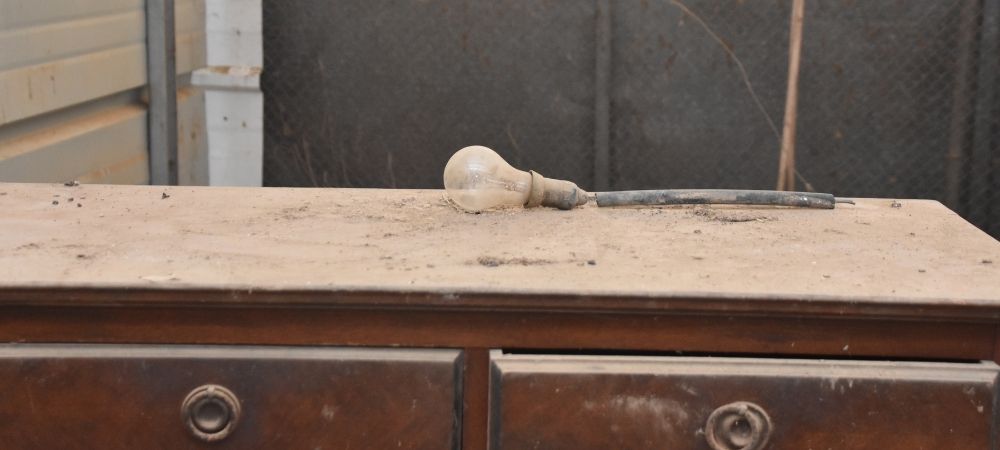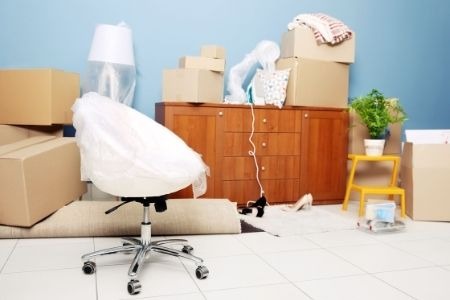How to Pack Furniture for Long-Term Storage in 6 Steps

Furniture is in every room in your home, so we understand the need to know how to pack furniture for long-term storage. Whether you have a set of antique chairs you don’t have room for any more, a vibrant pink sofa that no longer matches your décor, or it’s officially time to upgrade the dining room table—self-storage can come in handy, especially if you’re not ready to part with your unique pieces.
But, to keep your furniture in great shape while in storage, you need to pack it properly. We’ve created this guide to help you prep your furniture for self-storage, so it can be stored safely for longer periods of time, or at least until that pink sofa comes back in style.
Here's how to pack furniture for long-term storage in 6 steps:
1. Clean Your Furniture
Cleaning is one of the most important steps to get your furniture ready to store. Even if you spot clean or treat your furniture regularly, it needs to be deep cleaned before you put it in storage. Putting a piece of dirty furniture in a storage unit can result in damage from pests, dust and moisture.
How to clean wood furniture
Choose a gentle soap or wood cleaner for all wood furniture. It’s also a good idea to apply a coat of polish on wooden surfaces to stop the wood from drying out.
How to clean metal furniture
Prepare metal furniture using a metal cleaner and polishing cloth. You can also use steel wool to get off any rust and avoid major oxidation in storage.
How to clean fabric furniture
Clean fabric furniture with a vacuum and upholstery cleaner. Let the piece of furniture dry out completely before putting it in storage to avoid moisture, mold and mildew.
How to clean leather furniture
Similar to fabric furniture, start off by vacuuming. Then use a leather cleaner, and add a leather protector or conditioner last. Read our full guide for storing leather furniture.
2. Disassemble What You Can

Make transportation easier by taking apart the furniture you can—including bookshelves, desks and more. If you can’t completely disassemble a piece of furniture, consider taking off the legs or removing drawers. Just make sure to put all hardware and small pieces in a bag and tape the bag to the back of the piece of furniture, or inside a drawer.
3. Wrap/Cover Furniture
Covering your furniture while it is in storage is essential to ensure it stays in good condition. Prevent damage from dust and debris and create a layer of protection with old sheets, blankets or drop cloths. Wrapping or covering your furniture in breathable material is crucial to prevent any mold build-up.
Plastic wrap is often considered a popular way to protect your furniture, but it is important not to wrap it too tight. Also, avoid shrink-wrapping furniture if you live in an especially humid climate. To protect glass or ceramic pieces, first cover them in a layer of packing paper, and then use bubble wrap to pad it. See the full guide for wrapping your furniture.
4. Cover the Floor
It’s possible for furniture to absorb moisture from the floor and therefore become damaged. Protect your furniture by lining the floor with plastic sheeting. You can further raise furniture by putting down pallets or cinder blocks, then covering those with the plastic sheets before stacking your furniture.
5. Place Items Correctly

After you’ve placed a plastic lining on the floor, you need to place your furniture in storage carefully. Even if you’re looking to conserve space, it’s important to properly store your items so they stay in good condition. Don’t store sofas or couches on their sides and be sure to leave a few inches between each piece and the walls to allow for air circulation.
6. Consider Climate-Control for Long-Term Storage
A great way to keep your furniture safe while in long-term storage is a climate-controlled unit! These units stay between 55- and 80 degrees Fahrenheit to help mitigate damage from humidity. Temperature-regulated units are especially important for long-term storage, but your furniture can always benefit from a climate-controlled unit.
Wrapping Up: How to Pack Furniture for Long-Term Storage
We hope this guide has helped you get your furniture ready for long-term storage. No matter how long you plan to store your furniture, a climate-controlled unit from Store Space is a great option.
If you’re looking for self-storage, find your nearest facility with our storage location finder.






